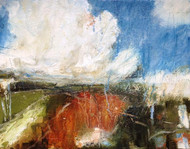ARTIST INTERVIEW: NIGEL PRIDDEY WINS OUR PRIZE FOR WATERCOLOUR
Posted by Cass Art on 5th Jul 2018
This spring, the Mall Galleries in London hosted the 205th exhibition of the Royal Institute of Painters in Water Colours. The Cass Art Prize is awarded to a work demonstrating the most innovative use of colour. This year, artist Nigel Priddey has won with his work North Hill, Malvern. We caught up with Nigel to find out more about his work and watercolour techniques.
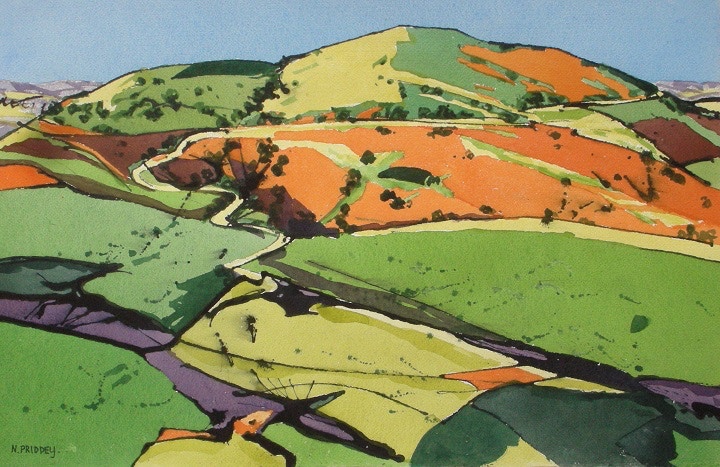
Congratulations on winning the Cass Art Award for most innovative use of colour. Tell us a bit about your background and how you got involved with the RI.
I studied at Hammersmith College of Art and Building and Thames Polytechnic, London and am a member of the Royal Birmingham Society of Artists and the Chartered Society of Designers. I currently live and work in Harborne, Birmingham. I have exhibited at the RI Mall Galleries exhibition for the last three years.
This year I am fortunate to be selected as a candidate for RI membership. My principal reasons for applying for membership is to be involved with a democratic society specialising in water media who offer non-members the opportunity to exhibit with members. I think this leads to diverse and exciting exhibitions. Also, watercolour is my chosen medium and I very much want to further its tradition and popularity especially when I hear other (non w/c) artists dismiss it. It still seems to be seen in some quarters as an 'amateurs' medium. It is not, of course and neither is it easy. Membership of the RI would help me to promote its cause.
I am currently Archive Officer for the RBSA and am currently involved with film making for the promotion of the Society's Archive and Collection, and its Accredited Museum status.
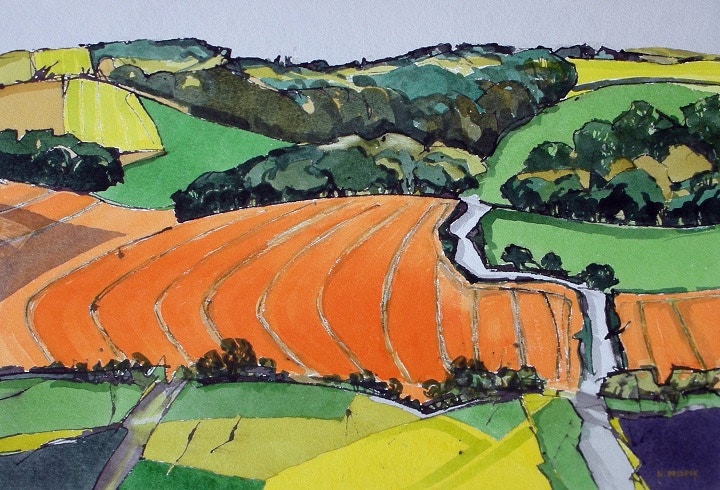
Can you tell us about how you achieve such vibrant colours in your works?
Colour and colour design is a very important feature of my work, and I do spend a lot of time mixing colour and placing one colour against another on a separate page before applying to the painting. I very rarely use a colour straight from the tube.
My colours are often quite intense, with a large proportion of pigment to water - about the consistency of milk. I like to complete a passage in a painting in a single wash wherever possible, as this gives the freshest appearance.
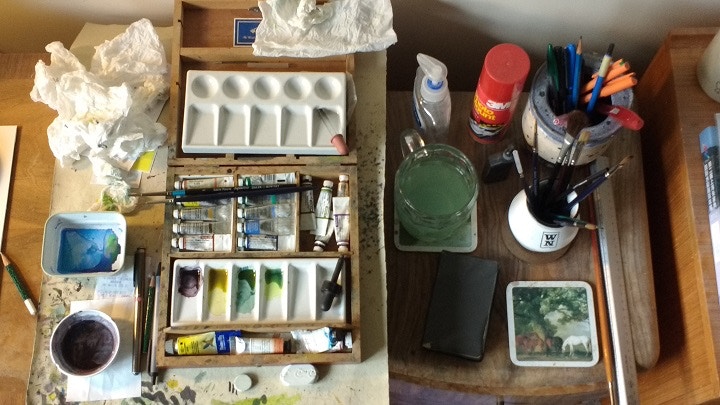
What are your favourite materials?
Let's start with paper, as that is I think the most important material when considering watercolour. I use Arches and Saunders Waterford papers in 300gsm. NOT surface generally, but sometimes a rough surface for full sheet works. I always stretch the paper whether full, half or quarter sheet size in the same way; simply wet the back of the sheet with a sponge, leave for five minutes and then use gummed paper tape to affix the paper edges to the board. The idea is to keep the painting surface absolutely pristine.
Paint: Winsor & Newton Artists' Watercolour in tubes. I use seventeen colours. I do not use gouache, acrylic or ink. Brushes: I use a selection of round sables and a couple of flat one stroke brushes. Squirrel mop used occasionally. Winsor & Newton is again my preference.

There are strong black, energetic lines across the works, how do you achieve these?
The first thing I do in a painting is to draw the initial structure with a pipette (ex ear drops!) using near-black watercolour. I do not use black but prefer to mix say Alizarin Crimson and Winsor Green to make this colour. I can fully load the pipette with paint and squirt it across the paper and then blow through a flexible drinking straw to create spidery meanderings and other 'accidental' effects. I also use spatter techniques. When I am satisfied with this process I allow the paint to dry completely before applying colour washes.
Can you tell us about your process? Do you work from photographs or from life?
All my paintings are done in the studio, and although I may use sketches and photographs as an initial reference, the finished painting rarely if ever looks anything like the reference. To me, it is important to discard the reference as soon as possible (about five minutes) and to let my memory or imagination take over. Some of my paintings have no reference and are inventions. These are the most rewarding to work on and potentially the most successful.
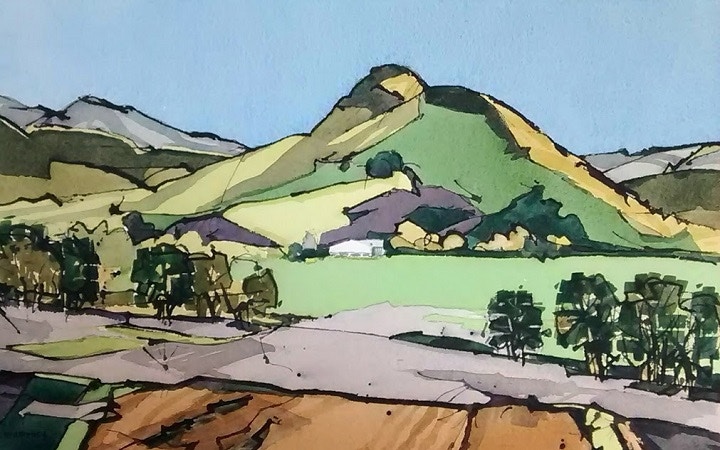
Can you talk about your colour compositions? Do you plan out the bold colours, are these entirely invented or enhanced from nature?
As previously mentioned, I rarely use colour straight from the tube, preferring to mix my colours. As soon as you do that there are infinite possibilities of colour combinations and arrangements. My paintings are on one hand quite abstract but nevertheless easily read as landscapes. Up to a point nature will guide me e.g. blue sky, green field, but in general my colours are invented and my aim is to make a colourful and powerful piece of work using the traditional medium of watercolour.
Find out more about Nigel Priddey on the RBSA website here.
Image credits:
Nigel Priddey at the Mall Galleries
North Hill, Malvern by Nigel Priddey ©
South Downs, West Sussex by Nigel Priddey ©
Materials in Nigel Priddey's studio
Hergest Ridge, Summer by Nigel Priddey ©
Pontesbury Hill, Shropshire by Nigel Priddey ©

